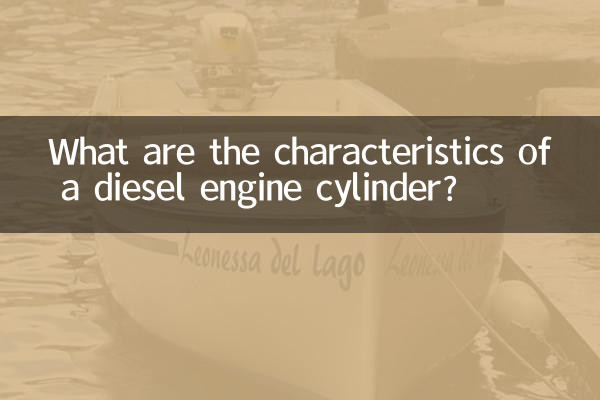What are the characteristics of a diesel engine cylinder?
Diesel engine cylinder pull is a common engine failure, usually caused by poor lubrication, overheating or mechanical wear. Understanding the characteristics of a cylinder pull can help diagnose and repair the problem promptly and avoid more serious engine damage. The following are the main characteristics of diesel engine cylinders and their related data.
1. Common characteristics of diesel engine cylinders

Cylinder pull refers to the phenomenon of scratches or wear due to excessive friction between the inner wall of the cylinder and the piston ring or piston. The following are the typical performance of the cylinder:
| feature | Specific performance |
|---|---|
| power loss | Engine output power is significantly reduced and acceleration is weak |
| Abnormal noise | Metal friction or knocking sound during operation |
| blue smoke | Blue smoke coming out of the exhaust pipe indicates burning oil |
| Increased oil consumption | Abnormal increase in engine oil consumption |
| water temperature rises | The engine temperature rises abnormally and the cooling system pressure increases |
2. The main reasons for pulling the cylinder
Cylinder pulling is usually caused by a combination of factors. The following is a statistical analysis of the main reasons:
| reason | Proportion | illustrate |
|---|---|---|
| Poor lubrication | 40% | Insufficient lubrication due to poor quality of engine oil or clogged oil circuits |
| overheat | 30% | Cooling system failure or long-term high-load operation |
| mechanical wear | 20% | Severe wear of piston rings or cylinder walls |
| other | 10% | Including improper assembly, impurities entering the cylinder, etc. |
3. Diagnostic method of pulling cylinder
If it is suspected that the diesel engine has a cylinder pull, a preliminary diagnosis can be made through the following methods:
| diagnostic methods | Operation steps |
|---|---|
| listen to the sound | Start the engine and listen for any metallic friction or knocking sounds |
| Check engine oil | Observe whether the engine oil contains metal shavings or impurities |
| Measure cylinder pressure | Use a cylinder pressure gauge to measure the pressure in each cylinder. Low pressure may indicate a cylinder pull. |
| Disassembly and inspection | Disassemble the engine and directly inspect the cylinder wall and piston ring wear |
4. How to prevent cylinder pulling
The key to preventing cylinder pulls lies in regular maintenance and correct operation. Here are some effective preventive measures:
| measure | Specific content |
|---|---|
| Change engine oil regularly | Use high-quality engine oil and replace it on time to ensure lubrication effect |
| Check cooling system | Make sure the radiator, water pump and other components are working properly |
| Avoid overloading | Long-term high-load operation will increase the risk of cylinder pulling |
| Check air filter regularly | Prevent impurities from entering the cylinder and causing wear |
5. Repair method of cylinder
Once the cylinder is confirmed, a repair plan needs to be selected based on the degree of damage:
| Fix | Applicable situations |
|---|---|
| Boring cylinder | Slightly pull the cylinder and repair the cylinder wall by boring the cylinder |
| Replace cylinder liner | Moderate cylinder pull, replace damaged cylinder liner |
| Overhaul engine | The cylinder is seriously damaged and requires complete disassembly and replacement of damaged parts. |
Summarize
Diesel engine cylinder pull is a serious mechanical failure, which mainly manifests as symptoms such as power loss, abnormal noise, and blue smoke. Cylinder pulling can be effectively prevented through regular maintenance and correct operation. Once a cylinder pull occurs, timely diagnosis and appropriate repair measures must be taken to avoid further damage to the engine.

check the details

check the details